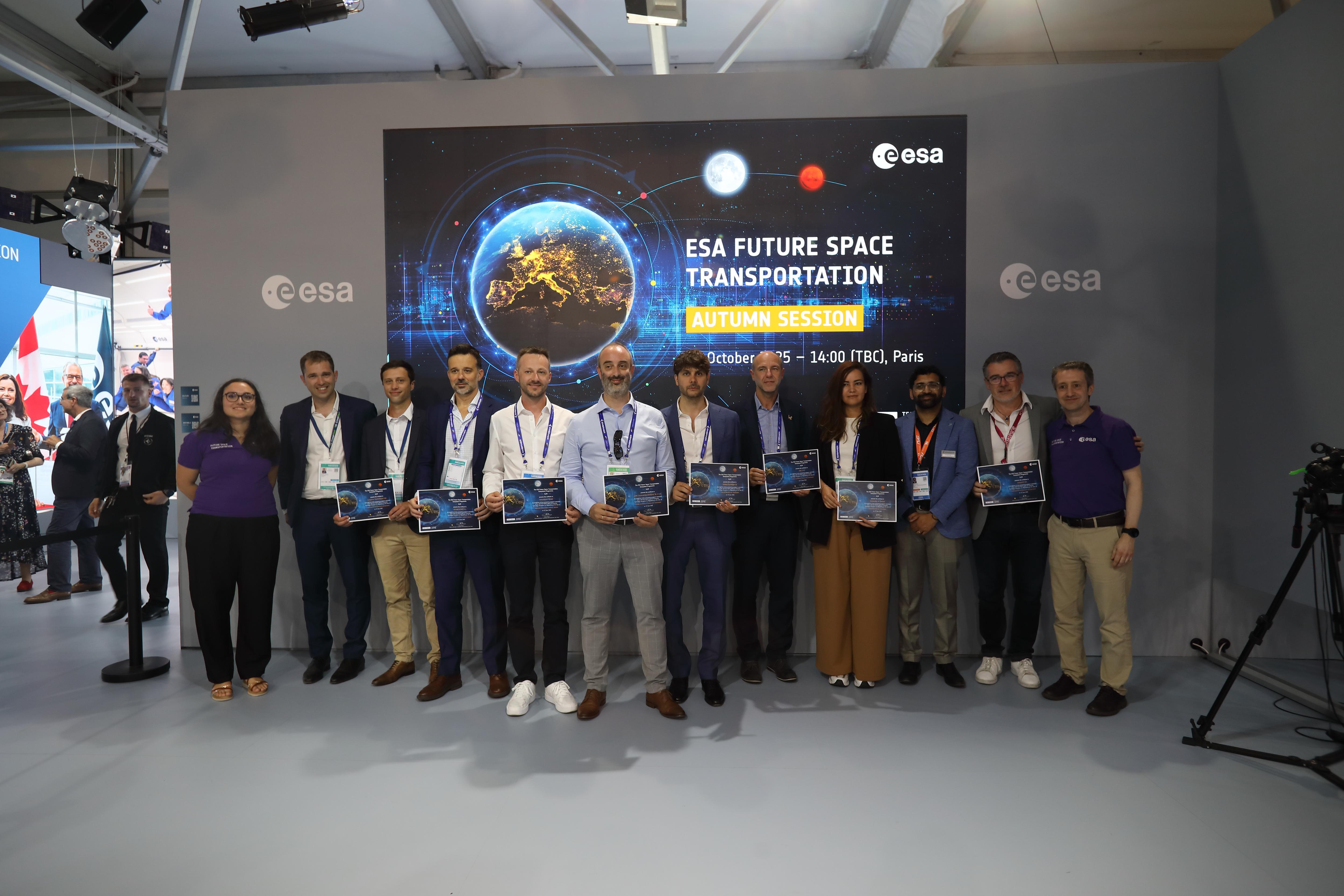ESA is guiding the development of advanced docking technologies to create a European space transportation ecosystem.
Two groundbreaking docking systems, ASSIST Pro from GMV and SIROM from SENER, are setting the stage for a European space logistics ecosystem. These systems were recently tested on the flattest floor in Europe, showcasing their capabilities in a series of free-floating trials.

Credit: ESA-SJM Photography
These tests are part of the In-Space Proof-of-Concepts (InSPoC) initiative, which falls under ESA’s future space transportation ecosystem programme (FLPP). FLPP aims to establish an interoperable European space transportation ecosystem, including all aspects of space transportation: from launch to payload delivery and return. This goal is achieved through progressive open competitions focusing on various thematic topics outlined in ESA’s visionary ecosystem roadmap.
Driving Space Innovation with Coopetition
InSPoC promotes “coopetition”, encouraging both competition and cooperation among technology developers. The programme’s coopetitive and convergence strategy ensures that interactions between in-space transportation vehicles will follow standardised, modular designs and utilise off-the-shelf interfaces.
“We do not believe in a ‘winner takes all’ approach, but rather in an interaction between different SpaceTech players”, emphasises Yann Tincelin, the In-Space Proof-of-Concepts Programme Manager.
Within the Preparatory Phase of InSPoC-1 project on in-orbit rendezvous and docking technologies, the programme brought together five consortia to develop advanced docking interface designs. The Definition Phase of InSPoC-1 are now almost completed with OHB Systems and The Exploration Company as Primes. Through this phase, the industry is maturing docking interfaces as ASSIST Pro and SIROM Pro to meet the needs of the future orbital economy.
The InSPoC-1 project involves designing secure and standardised interfaces for grappling, docking and interconnection between two spacecrafts. With these interfaces, space-tugs will be able to dock to their payloads in orbit to perform their in-space transportation and delivery.
Simulating Weightlessness on Europe’s Flattest Floor
Testing docking systems designed for the weightlessness of space presents unique challenges on Earth. To overcome this, ESA engineers utilize the ORBIT air-bearing floor facility in ESA’s Orbital Robotics Laboratory at the agency’s ESTEC centre in the Netherlands. This ultra-flat 45 sq. m floor simulates zero-gravity conditions, allowing engineers to test and refine docking mechanisms in a realistic environment.
“In weightlessness, the moment you make contact with another free-floating object, the force you exert on it can easily push it away”, explains Marti Vilella Ramisa, Automation & Robotics Engineer in charge of the ESA Orbital Robotics Laboratory, “To prevent this, the chaser spacecraft would be equipped with a device for capture before contact, to assure the object cannot float away before latches are deployed to achieve hard docking. The aim is for zero-force capture, meaning the satellites will join together without pushing themselves away from each other.”
Credit: ESA-SJM Photography
Advanced Docking Solutions for the Future
GMV’s ASSIST Pro and SENER’s SIROM stand out for their effectiveness in grappling and docking capabilities for InSPoC-1’s Definition Phase. ASSIST Pro is recognised for its increased capture range and ability to directly dock with other vehicles. SIROM will soon be extended with an add-on grappling module to improve functionality.
Credit: ESA-SJM Photography
An additional LARIS-S System by PIAP Space is being developed in tandem. This system features additional grappling devices to secure docking for heavy payloads or cargo.

Credit: ESA-SJM Photography
Next Steps
The results of the InSPoC-1 Definition Phase will be presented during the Docking User’s Club session #2 on 11 June 2024 with the In-Space Transportation Club. Following this, the InSPoC-1 Implementation Phase will finalise interface designs and culminate in an In-Orbit Demonstration (IOD) for rendezvous and docking capabilities between two spacecrafts.
As these advanced docking systems undergo rigorous testing, the InSPoC venture continues to advance the development of a standardised, modular framework for in-space transportation. This progress propels Europe towards a future where orbital servicing and logistics operations are both commonplace and indispensable.
Learn more about InSPoC and ESA’s vision for the future of space transportation on the Future Launchers Preparatory Programme brochure.
View the brochure









